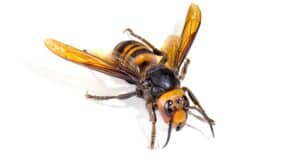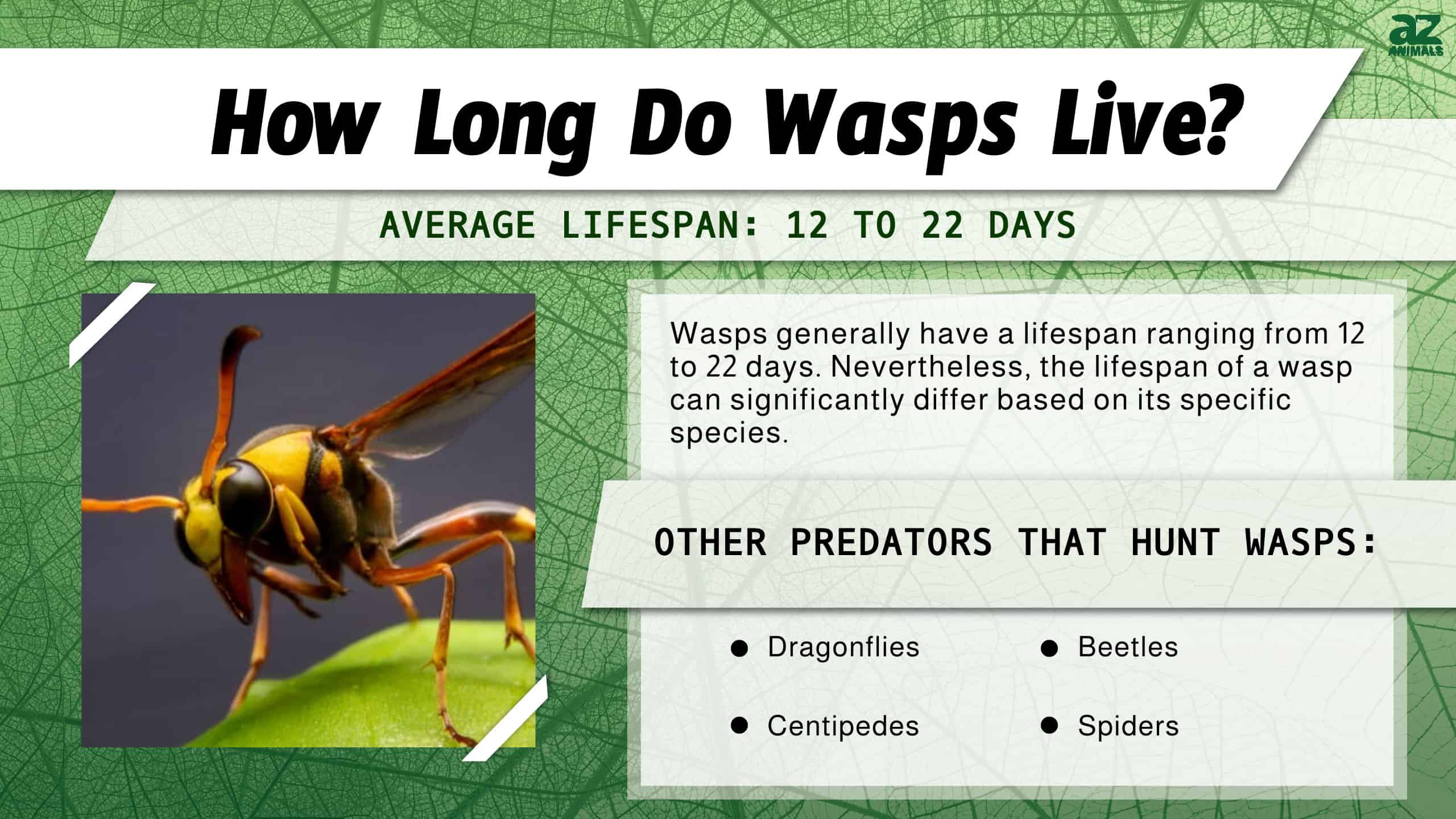
When most of us think of wasps, we automatically think of noisy insects whose stings hurt badly. They sting just like bees, however, unlike a bee, a wasp can continue to sting you over and over again. Since they don’t produce honey like bees, it can be easy to assume that these insects serve no real purpose other than to damage shrubs and trees. However, wasps actually play an incredibly important role in our planet’s ecosystem.
So if you enjoy learning about insects, then stick around to explore the wasp lifespan. In this article, we’ll give you a crash course on everything wasps. This will include just how long wasps live as well as going over the average wasp life cycle.
The Rundown on Wasps
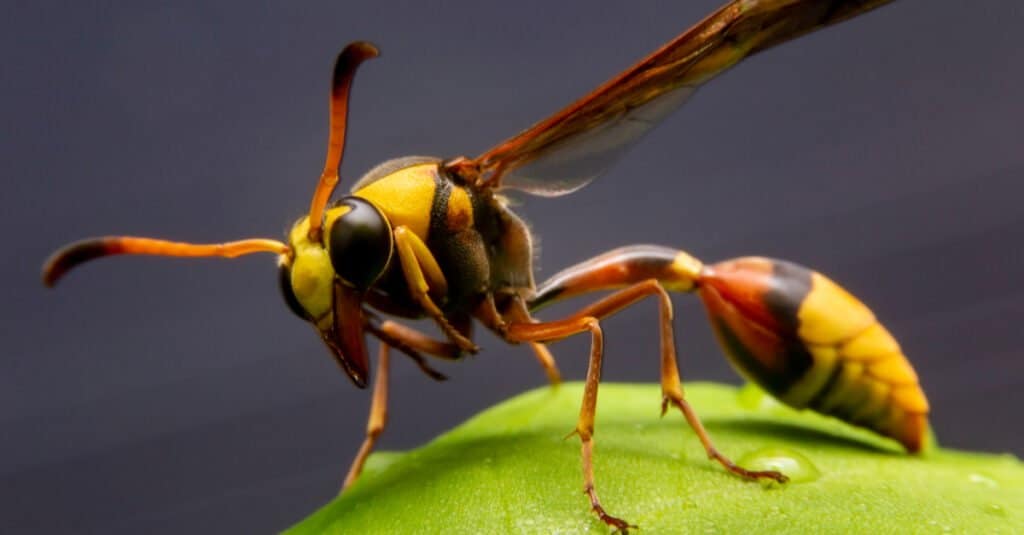
Yellow jacket wasps can reach speeds of 30 MPH.
©Witsawat.S/Shutterstock.com
Wasps are classified as parasitic insects. They are found in abundance all throughout the world in the United States, Africa, Asia, Europe, and even incredibly thick forests and grasslands. The only place you won’t find them in Antarctica. There are currently 30,000 identified species of wasps discovered all over the world.
As such a pervasive species, it would only make sense for them to have a huge impact on the earth’s ecosystem – and they do! Wasps are incredibly important for many reasons. Wasps are aggressive predators. They hunt and chow down on many insects that wreak havoc on crops. As omnivores, they’ll eat a diet of grasshoppers, aphids, flies, and nectar from flowers and honeycombs.
This predation helps regulate the number of many insects that destroy plants, allowing for a balanced and diversified environment. Some wasps even consume other wasps, which helps them keep their population under control as well.
How Long Do Wasps Live?
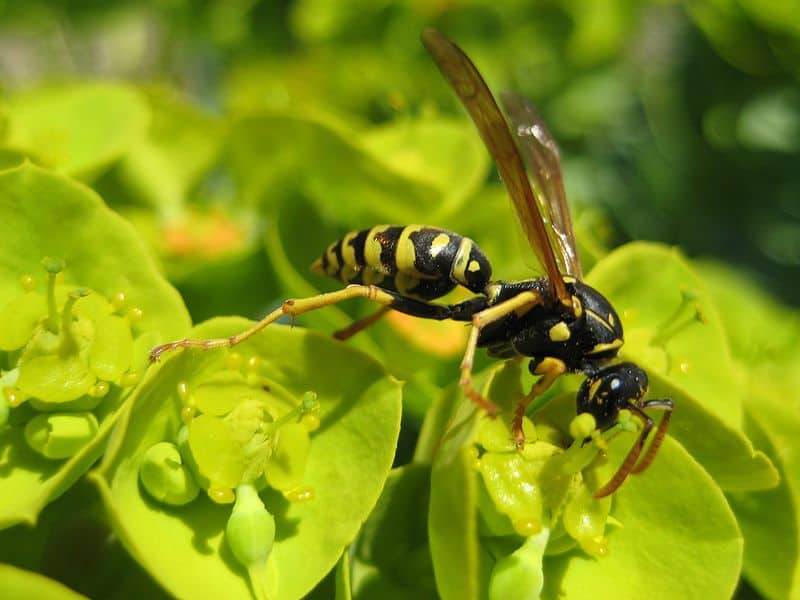
Wasps come in a wide variety of colors including red, orange, green, and even blue.
The lifespan of a wasp is anywhere between 12-22 days. A wasp’s lifespan, however, varies greatly depending on its species. For example, although worker wasps might survive for 12-22 days, the queen can live for over a year.
Interestingly, a study published in the Scientific Report found that a strepsipteran parasite extended the life of Polistes dominula paper wasps infected by it. Two-thirds of wasp workers parasitized by an X. vesparum female survived and overwintered like future queens did as the parasite works to complete its own life cycle.
To better understand how the wasp lifespan normally operates, let’s explore the life cycle of the average wasp.
The Average Wasp Life Cycle
We’ve taken a look at the answer to the question, “how long do wasps live?”, but what is their lifecycle like? Like most other insects, the wasp goes through the same distinct life cycle stages. Wasps have four stages in their life cycle:
The Queen Lays Egg
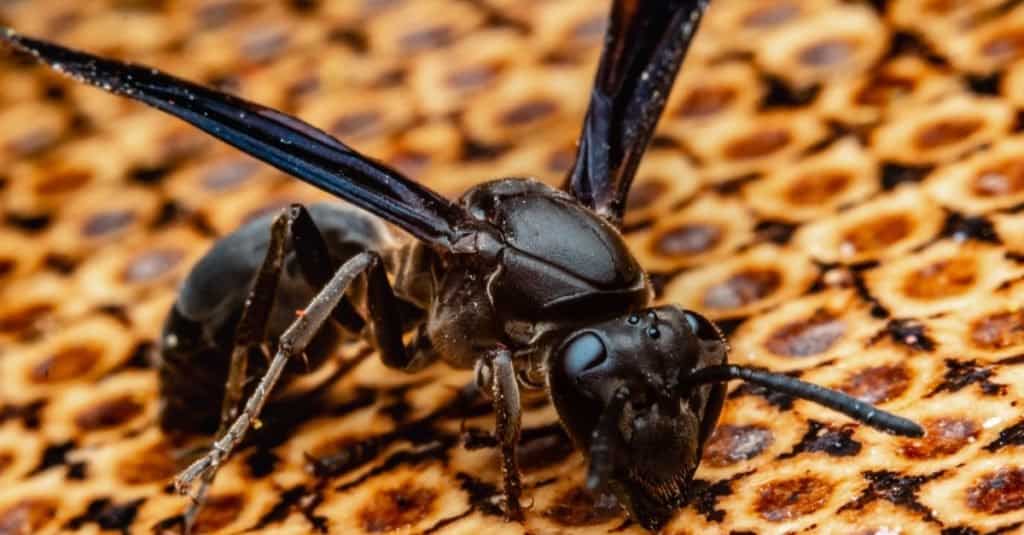
Wasps can create their own paper when building their nests.
©JULIO CHINAZZO/Shutterstock.com
Each wasp colony is started up by a queen. During the winter, the queen goes into hibernation. Once the queen awakens from hibernation, the nest’s life cycle begins. The queen lays eggs once she has found a good site for her nest. The eggs laid in this nest are fertilized one by one by the queen using the sperm she has saved before going into hibernation. Their average litter size is roughly 400 eggs.
Larva
The eggs hatch in 5 to 8 days and emerge as larvae. To feed the larvae, the queen collects sweet substances, like nectar, and captures other insects for protein sources. After about 15 days, each larva spins a silken cover over the cell and pupates.
Pupa
As the wasp pupates, it begins to transform itself into an adult wasp. The color of the pupa starts off white and begins to slowly turn into darker colors that resemble the colors of an adult. Once the pupa has fully undergone its transformation, it will break through its cell cap and emerge.
Adult Wasp
After the pupa stage is completed, an adult wasp will emerge. As the queen continues to lay more eggs, these wasps will take over the nest-building process. They will also nurture the young, and search for food for the colony’s expansion.
Major Threats to the Longevity of a Wasp’s Life
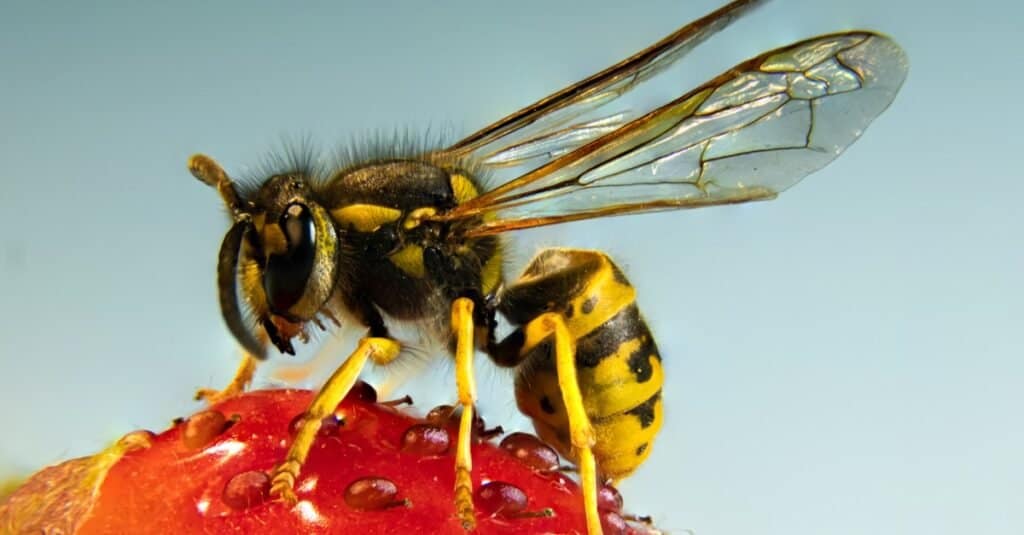
Wasps can actually recognize other wasps from one another.
©Thomas Hochreutener/Shutterstock.com
As such fierce predators, wasps are quite intimidating to many – humans included. However, they are not immune to threats from natural predators. The wasp lifespan is often threatened by these natural threats that eat them.
Wasps are consumed by a wide range of animals, including insects and invertebrates such as dragonflies, praying mantis, spiders, and centipedes. Birds such as mockingbirds, sparrows, nighthawks, and starlings all eat wasps as well as reptiles and amphibians such as lizards and geckos, and mammals such as mice, weasels, badgers, and black bears.
Despite being hunters themselves, wasps are not a top predator. They often fall victim to a wide variety of threats, plants included. It’s been noted that one type of pitcher plant, Sarracenia, does consume Asian hornets from time to time.
Fun Facts About the Wasp Lifespan and Life Cycle
- A mated female wasp is the only wasp that survives the winter. This female will seek out a secure area to spend the winter and will remain dormant until spring. If the queen survives her winter-long hibernation, then she will continue the colony. This cycle continues onward as each queen wasp only lives for a year.
- Male wasps are incapable of stinging. Because the stinger and its venom are part of a female wasp’s reproductive system, only females are able to sting.
- Male wasps are called Drones. The Drone’s job is to mate with the Queen. Once they have completed this, they typically die shortly afterwards.
- All wasps go through metamorphosis. No matter the species, all of them will go through the larva stage that eventually transforms into the resting pupa stage that allows them to transform into a adults.
The photo featured at the top of this post is © Richard Bartz / Creative Commons / Original
Thank you for reading! Have some feedback for us? Contact the AZ Animals editorial team.





